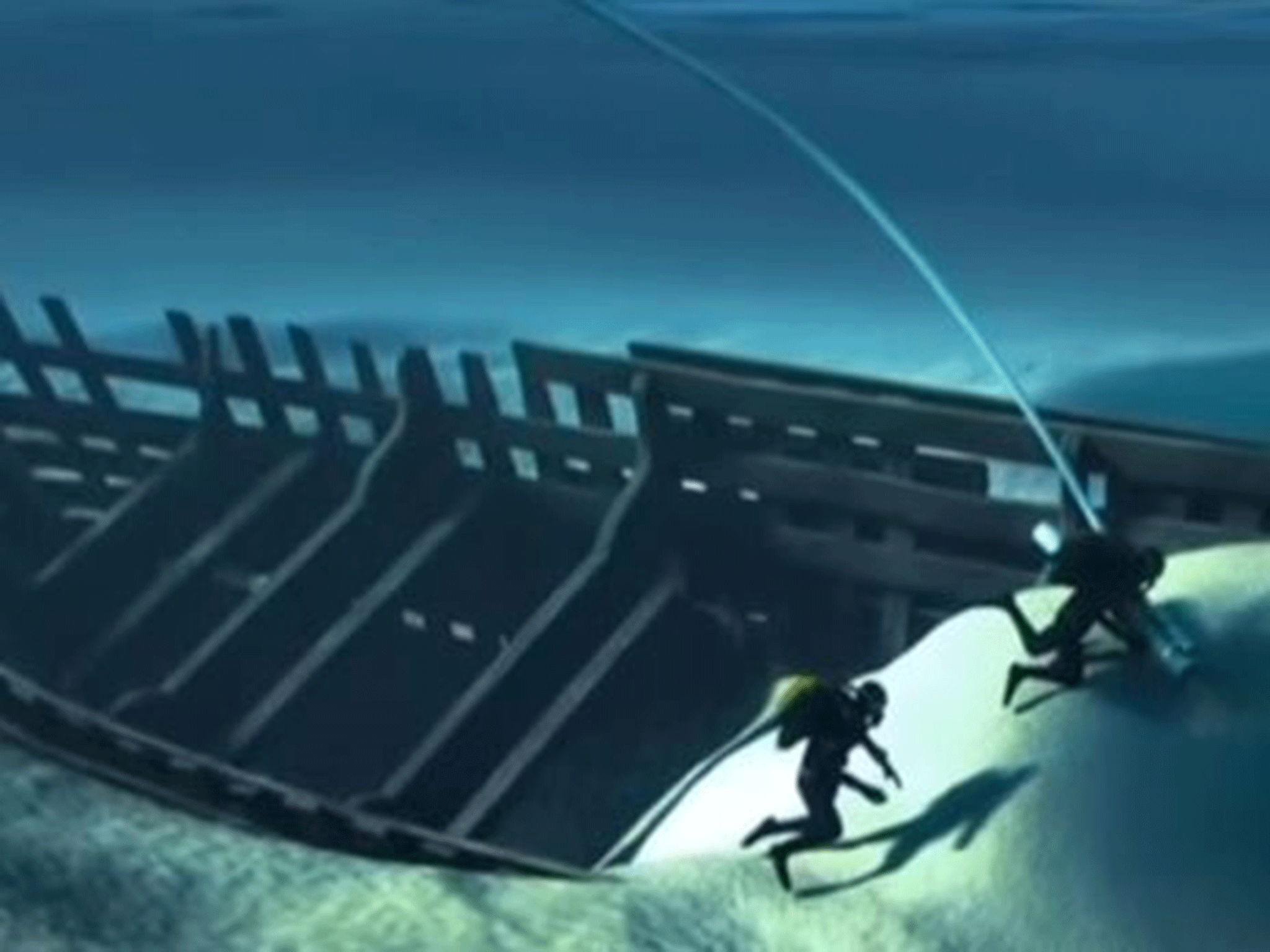Medieval trading ship raised to surface 'almost intact' after 500 years on riverbed in Netherlands
The ship even has an oven and glazed tiles still preserved onboard

A medieval ship has been raised after half a millenium of resting on a riverbed in The Netherlands.
Archaeologists have confirmed that the find is a 15th century "cog" - a trading vessel used to sail the North and Baltic Seas, according to Sky News.
While evacuating the port of the city of Kampen, construction workers came across the skeleton of the ship underwater beneath sand and silt.
It measures approximately 20 metres by eight, weighs about 40 tonnes, and is believed to have lain there for about 500 years.
Archaelogist Wouter Waldus said after the ship had been weighed they knew the structure was stable. It even has a brick-arched oven and glazed tiles intact on the rear deck, according to Sky News.
Because of metal joints across the structure, it was sturdier than other vessels of the same era and was remarkably well-preserved, said experts.
Named "Ijsselkogge" after the river delta it was found in, the structure was brought out of the water in a specially constructed metal frame, with straps around it controlled by a computer.
A cog was a type of ship generally built of oak, fitted with a single mast and a square-rigged single sail, which first appeared in the 10th century and was widely used from around the 12th century in medieval Europe.
They were particularly used by the Hanseatic League, which was a commercial and defensive network of ties between merchant guilds across the Baltic and North sea.
"Ijsselkogge" will be restored at the Nieuw Land Heritage Centre in Lelystaf, where it will be always be kept wet so as to ensure it remains preserved.
Subscribe to Independent Premium to bookmark this article
Want to bookmark your favourite articles and stories to read or reference later? Start your Independent Premium subscription today.

Join our commenting forum
Join thought-provoking conversations, follow other Independent readers and see their replies